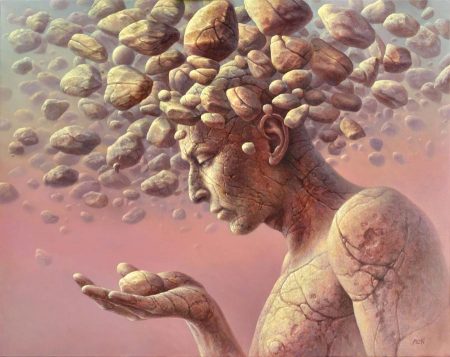
In this age of swift advancements in brain imaging and research, we are uncovering more of the mysterious functions of the brain and body. Perhaps we’ll finally reflect on the nondual nature of the mind/body that Jesus the Christ, the Buddha, and Lao Tsu prolifically wrote and taught over 2000 years ago.
It’s nice to have the ancient paradoxical teachings finally make some logical sense now that science and medicine have begun to show there is no evidence for a fixed, permanent, separate self. Instead of observing life, reality, the world, we instead observe the mind observing the world. In doing so, the objective universe dissolves and what remains is a fabrication of subjective reactions, a dream.
When we close our eyes, we experience the edgeless, formless, primal emptiness of consciousness and not the contents we seem to perceive with our eyes open. This helps us grok that altering the perceptual lenses changes what we believe we see. We finally comprehend and understand that “me” is a figment of imagination. One such medical doctor, Sunil Pandya, a neurosurgeon, and thinker on medical ethics, summarizes the scientific aspects of the mysterious relationship between the mind and brain with each technological advancement here.
In short, Dr. Pandya indicates there is “a clear connection between mental functions as we understand them (‘mind’) and the structure that produces it (brain).” He continues by saying ”The mind… is a virtual entity, one that reflects the workings of the neural networks, chemical and hormonal systems in our brain.” Further, Dr. Pandya reports ‘The mind cannot be localized to particular areas within the brain, though the entire cerebral cortex and deep grey matter form important components. Consciousness, perception, behaviour, intelligence, language, motivation, the urge to excel, and reasoning of the most complex kind, are the product of the extensive and complex linkages between the different parts of the brain.’
Others, including neuropsychologist Dr. Rick Hanson along with neurologist Dr. Richard Mendius scientifically describe the illusory nature of a fixed, permanent, separate self in the book The Practical Neuroscience of Buddha’s Brain. These behavioral and brain specialists compare the separate self to a unicorn, a truly fictional character, “as the brain strings together moments of selfing and subjectivity into an illusion of homogenous coherence and continuity.”
The echoes of the ancient nondual teachings of Wu Hsin, Jesus the Christ, Lao Tsu, Upanishads, and the Buddha, are new again as they point towards the illusory nature of mind and the projected separate self.
